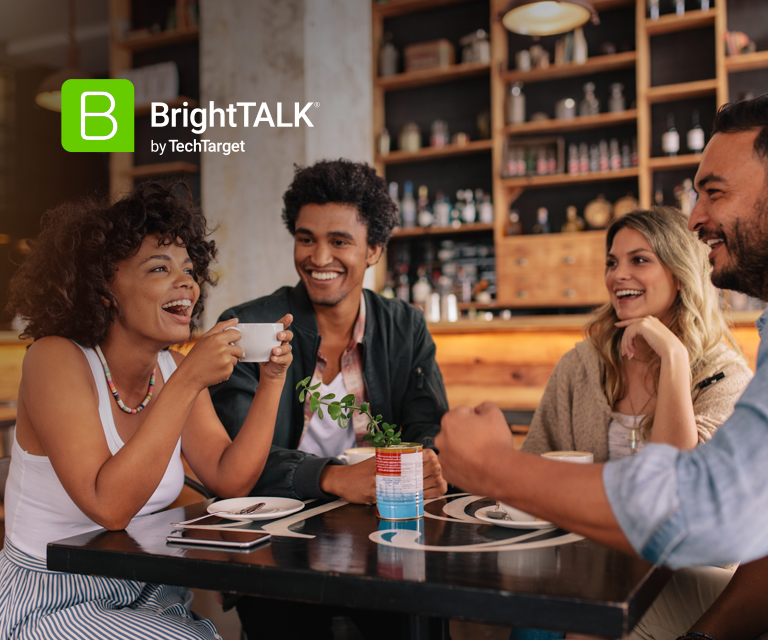- April 28, 2023
- ABM, Sales, Sales and Marketing Alignment
Multi-Threading: Successfully Bring Buying Teams Together
 Data shows that B2B buying decisions are made by collaborative groups – and the number of people within these buying groups is growing. According to Gartner, an average of 11 individual stakeholders are involved in a B2B purchase. The challenge for sellers is that many of these stakeholders will never become “leads” in the traditional sense, so there’s not always a process in place to identify and engage key buying group members. Additionally, buyers now take a digital-first approach to their pre-purchase journey, meaning there are far fewer opportunities for Sales to connect with buyers early on. Effectively penetrating a target account can be a lot of work for sales organizations, but they don’t need to go at it alone. A synchronized effort across go-to-market teams can lead to deeper connections, bigger deals and better relationships.
Data shows that B2B buying decisions are made by collaborative groups – and the number of people within these buying groups is growing. According to Gartner, an average of 11 individual stakeholders are involved in a B2B purchase. The challenge for sellers is that many of these stakeholders will never become “leads” in the traditional sense, so there’s not always a process in place to identify and engage key buying group members. Additionally, buyers now take a digital-first approach to their pre-purchase journey, meaning there are far fewer opportunities for Sales to connect with buyers early on. Effectively penetrating a target account can be a lot of work for sales organizations, but they don’t need to go at it alone. A synchronized effort across go-to-market teams can lead to deeper connections, bigger deals and better relationships.
What is multi-threading?
Multi-threading is a motion where sellers develop relationships with multiple decision-makers and influencers in an account. These deep connections can help Sales land the first deal with an account and create pathways for long-term retention and growth for existing customers. Identifying and engaging as many stakeholders as possible is crucial to creating strong relationships. It also ensures that if one member of the account leaves or changes roles, you still have deep relationships with other stakeholders.
Traditionally, multi-threading was often an organic practice that occurred in face-to-face events or meetings. Now, multi-threading is primarily done virtually, by casting a wider net and influencing the entire buying team from an often digital-only place.
Three tactics sellers can use to enhance multi-threading are:
- Treat stakeholders like you are part of the same team. When thinking about building relationships with buyer team members, remember that you all have the same goal. Consider how you can bring value to that individual, like how to make their job easier.
- Leverage social media to build early connections with buying group members. Follow your customers, listen and interact with them, to show interest and investment in them as individuals. Sharing useful information through social media platforms can also help position you as a thought leader.
- Give new stakeholders a warm welcome. As more and more people change roles, it’s likely that the stakeholders within an account will change and that you as a seller, may have more historical knowledge of the account than that individual. Use this knowledge to help a stakeholder network within their own organization. And when you meet new potential stakeholders, introduce yourself, connect on social media and begin to build that relationship from day one.
Multi-threading is a full team effort
Multi-threading is an effective way to engage a buying group earlier to create opportunities and accelerate deals. Many of the best sales professionals are already doing it. But multi-threading isn’t just for sales. Individuals and teams across a company need to help bring buying team members together. And real purchase intent data helps enable this end-to-end support with insights that show who the buying team members are, when to engage them and how.
How can SDRs support multi-threading?
Across the customer lifecycle, there are several places where we typically see a lot of breakage within SDRs’ responsibility: dropped balls, funnel leakage and more. This area is where SDRs can help inform who to go after and multi-threading with.
So, how do you get your SDRs to support multi-threading? Real purchase intent data, like that from TechTarget’s Priority Engine™, lets sellers see which individuals within an account are actively researching solutions, and what specific content they are consuming. These are the individuals sellers should be multi-threading from a target account. With these insights, SDRs can flag these new individuals to an account rep to help enrich their multi-threading efforts.
How can Marketing help with multi-threading?
We know that buying groups are getting larger and are therefore much harder to engage and pull together. This is where Marketing can help.
Using purchase intent data, Marketing can identify what type of content will be most valuable to the buying group, based on their own activities. With this information, Marketing and Sales can work together to create an offer – often in the format of a meeting – that key players in a client buying center will want to attend. Forrester has coined this approach the High-Value Offer (HVO).
Four types of useful High-Value Offers for group engagement are:
- Market trends, data and vision. Inform or challenge a buyer in a live session covering the latest market vision, proprietary or third-party data and analysis.
- Collaborative planning. Deliver a session that solves buyer challenges using a clear point of view and a collaborative plan of action.
- Customized experiences. Customize existing content – e-books, slides, white papers – to address known buyer challenges for in-person discussion.
- Peer experiences. Meet virtually to share similar situation use cases from industry peers with similar challenges, processes, tactics and tools.
For more insights on multi-threading and creating new opportunities with HVOs, watch Multi-Threading: How Sales Acts on Buying Teams.
ABM, b2b sales, sales and marketing alignment


 Contact Sales
Contact Sales
